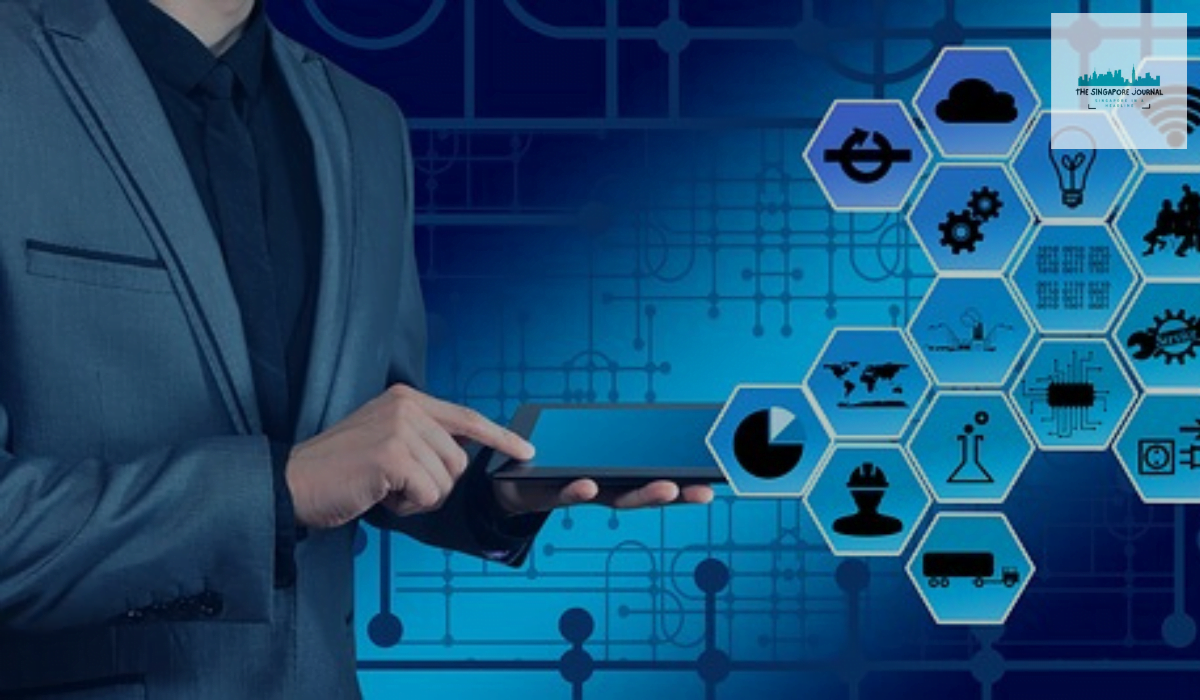aThe term “What is Industry 4.0″ has become increasingly popular in the era of rapid technological advancements. Also called the Fourth Industrial Revolution, Industry 4.0 represents the integration of digital technologies into industrial processes, creating a new paradigm for manufacturing and production driven by disruptive trends, including the rise of data and connection, analytics, human-machine interaction., and improvements in robotics. Cyber-physical systems establish the basis of Industry 4.0. They use modern control systems, have lodged software systems, and discard an Internet address to associate and be addressed by the Internet of Things(IoT). This blog post aims to shed light on what is Industry 4.0 entails and how it works.
What is Industry 4.0?
Industry 4.0 is a term coined to describe the ongoing transformation of traditional industries by adopting developing technologies like artificial intelligence (AI), robotics, big data analytics, cloud computing, the Internet of Things[IoT], and more. It represents a shift towards intelligent, interconnected systems that enable industrial processes’ automation, optimization, and flexibility.
Industry 4.0 is a vision that developed from an initiative to make the German manufacturing industry more competitive to a globally adopted term.
The Previous Industrial Revolutions:
To better understand what Industry 4.0 is, let’s briefly review the previous industrial revolutions. The first industrial revolution was distributed by the mechanization of production using steam power and water. The second industrial revolution introduced mass production through electricity and assembly lines. The third industrial revolution brought about computerization and automation through electronics and information technology.
What is the Industrial Revolution 4:
- Steam pushed the first original Industrial Revolution
- Electricity powered the second
- Preliminary automation and machinery engine was third and
- Cyber-physical systems, or intelligent computers, are shaping the fourth Industrial Revolution.
Industry 4.0:
The Fourth Industrial Revolution Industry 4.0 builds upon the foundation laid by its ancestors. It leverages the power of advanced technologies to connect machines, products, and people, creating a cyber-physical system that drives intelligent decision-making and enhances productivity. It represents an intersection of the physical and digital realms, blurring their boundaries.
Critical characteristics of Industry 4.0

What is Industry 4.0 can be easily known through some key technologies that are driving the transformation of industries in the fourth industrial revolution:
1. Internet of Things (IoT):
The IoT enables the interconnection of physical devices and systems, facilitating the seamless exchange of data and information. It allows real-time data collection from sensors and devices throughout the production process.
2. Artificial Intelligence(AI):
AI technologies, like deep learning and machine learning, permit machines to learn from data and make intelligent decisions without explicit programming. AI can be applied to various industrial processes, including predictive maintenance, quality control, and demand forecasting.
3. Big Data Analytics:
With the large amount of data generated by IoT devices, big data analytics provides the means to extract valuable insights. Businesses can optimize operations, predict maintenance needs, and make informed decisions by analyzing and interpreting this data.
4. Additive Manufacturing:
Additive manufacturing, also known as 3D printing, revolutionizes production by building objects layer by layer. This technology offers greater design flexibility, reduced waste, and faster prototyping.
5. Robotics and Automation:
Using robots and automation systems increases manufacturing efficiency, precision, and productivity. Robots can perform repetitive tasks accurately, freeing human employees to focus on more creative and complex endeavors.
How Industry 4.0 works:
After understanding what Industry 4.0 is, let us know how it works.
At the core of Industry 4.0 is a “smart factory.” In a smart factory, interconnected machines, devices, and systems communicate and collaborate autonomously. Here’s how it works:
1. Connectivity:
Sensors, devices, and machines are connected via the internet, forming the IoT network. They collect and transmit real-time data on various aspects of the production process, like machine performance, energy consumption, and product quality.
2. Data Collection and Analysis:
The data collected from connected devices is aggregated and analyzed using advanced algorithms and big data analytics tools. This analysis helps identify patterns, anomalies, and opportunities for optimization.
3. Human-Machine Collaboration:
Industry 4.0 emphasizes the collaboration between humans and machines. While machines handle repetitive and mundane tasks, human workers focus on higher-level activities like problem-solving, creativity, and decision-making. Humans provide the necessary expertise, oversight, and judgment that machines may lack.
4. Intelligent Decision-Making:
With the help of AI algorithms, machines can make intelligent decisions based on the analyzed data. This enables autonomous operation, predictive maintenance, and adaptive manufacturing processes.
5. Flexibility and Customization:
Industry 4.0 enables greater flexibility and customization in manufacturing. With the ability to collect and analyze real-time data, production processes can be quickly adjusted to meet changing customer demands and market trends. This allows for more efficient resource allocation, reduced waste, and improved customer satisfaction.
6. Cybersecurity:
As the industrial landscape becomes increasingly connected, ensuring cybersecurity becomes paramount. Industry 4.0 implementation requires robust security measures to protect sensitive data, prevent unauthorized access, and mitigate potential cyber threats.
Conclusion
What is Industry 4.0 can be derived from clearly representing a transformative phase for industries, where the integration of advanced technologies revolutionizes manufacturing and production processes. With its emphasis on connectivity, automation, data analysis, and human-machine collaboration, Industry 4.0 enables businesses to achieve higher efficiency, flexibility, and innovation. Embracing this revolution and adapting to the changing industrial landscape will empower businesses to stay competitive in the digital age.
Also Read:

